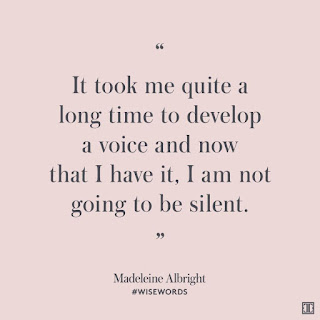Last time, we learned some really good news about triggers!
Although triggers can and will catapult us back into previous unhealthy patterns of thinking, behaving, and feeling, they can also serve to teach us more about ourselves and how to move forward in our recovery in healing and healthy ways!
 |
| Triggers can also teach us! |
In the previous blog, we were introduced to two important strategies to use as our triggers signal to us that we need to take care of ourselves and make different healthy choices. Let's take a look at a few examples of how these strategies work. (The names and people I am referencing are fictitious.)
Robert has been working on his sobriety for over two years. He faithfully works his program of recovery - attending 12 step meetings, checking in with his sponsor, and has formed new friendships within the recovery community. However, Robert has one old friend, Paul, who is still actively in his addiction. Every once in a while, Paul will call Robert and want to 'hang out'. When this happens, Robert is 'triggered'. Robert wants to go, but knows he shouldn't. Robert remembers all the good times, how long they have been best friends, and how they have 'been there' for one another. Then, Robert starts to recall all the bad times and how messed up Paul still is. At this critical point, Robert must stop - and pay attention to the messages from the trigger. And he must take care of himself. Perhaps Robert needs to set a better boundary about phone calls from Paul. Or, Robert needs to reassess and readjust his boundaries with Paul - telling him exactly what he will do or won't do with Paul. Possibly, Robert needs to go to meeting and get the additional support he needs. Robert is learning to do the following...
Listen to what the trigger is telling us! Pay attention to it! Choose a different path!
 |
| Triggers help us to take care of ourselves! |
Let's take a look at another example of how to make triggers work for us! Mary has been in many unhealthy relationships during her young adult life. She recently broke up with her long-term controlling boyfriend. She is lonely and misses him, but knows she cannot go back to the way things were. As Mary looks around her apartment, she see reminders of Brad - photos, a baseball cap, ticket stubs from a concert they attended. These are all triggers. Although Mary is very depressed, she stops and takes time for herself. She takes a pulse her 'trigger thermometer' and knows that she is very vulnerable and weak. For now, Mary knows she needs to do two things: first, put the mementos of Brad away (out of sight - out of mind!); and secondly, she needs to call a good friends who support her and her healthy decisions - she needs a little TLC! Mary is learning to implement a strategic tool...
Keep a pulse on our 'trigger thermometer'! It is right there with us - waiting and wanting to guide our choices and our decisions!!
Let's take a look at one last example. Family dynamics can be very difficult for many people. We feel the pull of responsibility and of obligation, and yet often times we sacrifice our own well-being in rescuing or enabling unhealthy or irresponsible family members. Although this example applies to numerous situations, I see many parents - especially Baby Boomers - struggling with this issue with their adult children. For example, Barbara and Mark have raised and supported three adult children. Although all three have graduated from college, Barbara and Mark don't want to see them 'struggle like they had to'. When they see their adult children going through tough times, this is a 'trigger' for Barbara and Mark. They become weak when they remember how no one helped them. Recently, a phone call came in from one of their adult children asking for more financial help. Only this time, because Barbara and Mark have been attending counseling and working on their codependency issues, they know this is an emotional trigger for them. They stop and check in with one another; they talk about how they are stronger and how they need to keep the boundaries they've learned; and they agree upon a response that protects them. Barbara and Mark are learning....
 |
| Triggers can bring us closer as we make healing choices. |
Triggers can pull us back into old patterns of thinking and behaving...and they can propel us forward into new healthy ways of choosing and being!
Triggers can be friendly allies, if we allow them to be. If you noticed in each example, I used the word 'stop' several times (as soon as a trigger signals a response). Let's add an easy 4 step tool as we learn how to make more good news out of our triggers!
As soon as you feel triggered:
- Step Two - CALM YOURSELF (Take deep breaths, sit down, relax...keep breathing)
 |
| Step Two - Calm ourselves! |
- Step Three - CLAIM YOUR PRESENT REALITY (Recall where you are right now; that you are in a well place; that you have worked hard; that you are safe and healthy; that you have the right to take care of you)
- Step Four - CHOOSE AN ALTERNATIVE HEALTHY BEHAVIOR - (Call a friend, sponsor, or counselor; set or reset a boundary; reclaim your voice and state what you need; set and adjust expectations and then maintain them; reinstate your self-worth and self-respect by making choices that are healing for you).
Homework: Keep identifying your triggers! Utilize your 'trigger thermometer' - its right there for you! When you feel triggered, implement the 4 step exercise! Every time you choose healthiness, feel your strength - breathe in the rewards of choosing wellness!






Comments
Post a Comment